





Making Sense of Self-Care
An Integrative Health Program to Engage Your Senses. This Week: Hearing
First time here? Make sure to read the introduction to the series!
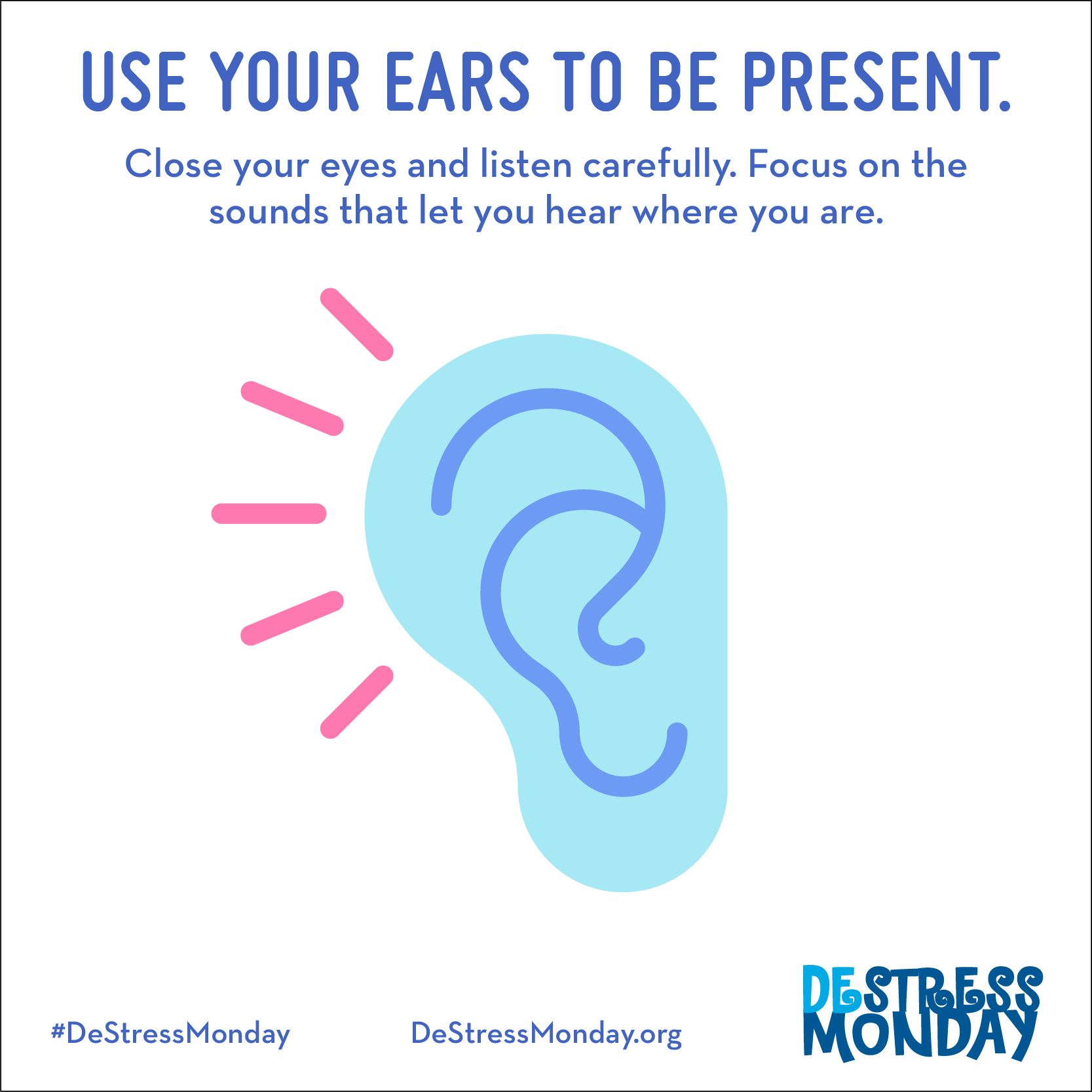
Action of the Week
“Deep listening is a process of truly connecting to ourselves and our lives.” Jillian Pransky
This week’s daily practice is an exercise in deep listening (Oliveros, 2005; Pavlicevic & Impey, 2013), aimed to heighten our awareness of our internal and external states as well as our sonic environment. This practice involves listening from a deep, receptive and caring place, enabling us to unlock “layer after layer of imagination, meaning and memory down to the cellular level of human experience” (Oliveros, 2005). Deep listening allows us to dig below the superficial listening and expand our whole sonic field, while feeling increased focus in the environment. One can do this exercise in any posture (i.e., sitting, lying down, standing or even walking) or setting. Explore the following exercise:
- Be present. Taking a moment, turn your attention to your breathing. Notice your breath, listening to the natural inhale and exhale and focusing on the present moment. Feel the clothes on your body. Feel the weight of your feet on the floor.
- Be aware. Engaging in a self-check in, take a moment to listen to your body from a nonjudgmental stance. Ask yourself: “What am I hearing from my body and mind?; What thoughts, feelings, and bodily sensations am I listening to?”
- Listen. Turn your attention towards the sounds that exist in your external environment. Allow any sounds that you hear to anchor you in the present moment. Try not to get caught up in judging what you hear or analyzing the sounds around you. Simply accept what you hear and allow yourself to experience it.
- Deeply listen. Begin to guide your listening to the general soundscape, listening to it as whole. If you become restless or other thoughts intrude, acknowledge them and allow them to pass like clouds in the sky. Refocusing on the breath can help us in recentering.
- Reflect. Reflect on what you heard and what you felt in the moment. Observe how your awareness has shifted from the beginning of the practice or how your relationship has changed to the sounds in the space. This information becomes valuable to how we want to interact and relate to the shifting sonic environment.
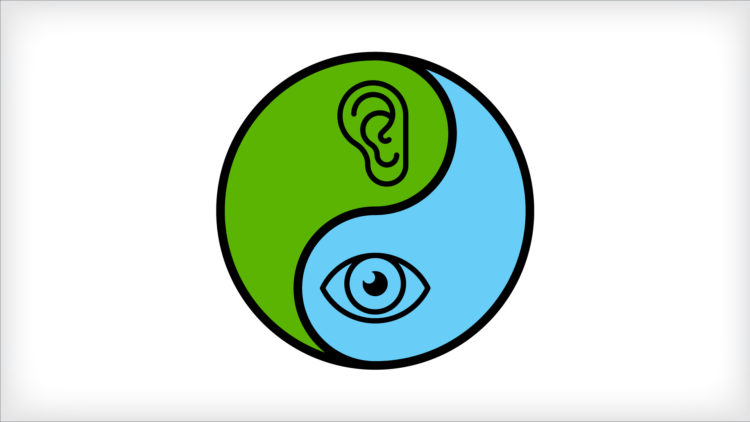

Hearing and Sight
Color Therapy: Color Therapy operates on the premise that each color has an associated frequency of energy. Try to pair a color with how different sounds make your feel. For instance, “The Blues” are usually connected with soulful sad emotions. Start imagining what color your favorite songs are while you’re listening to them.
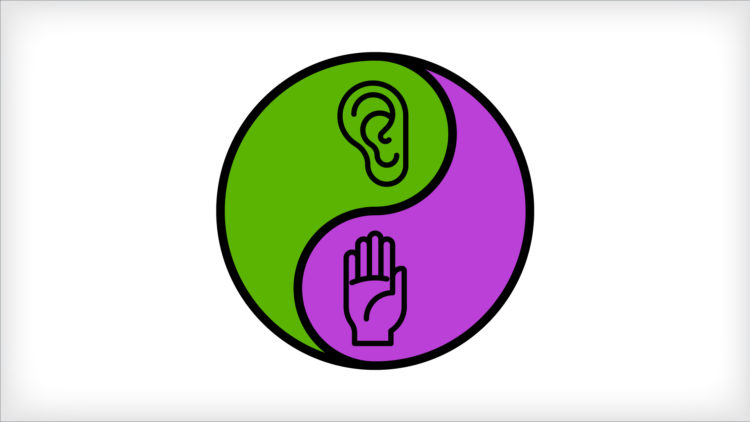

Hearing and Touch
Acupressure: San Jiao 3 - Zhongshu is an acupressure point located on the back of the hand slightly above the knuckle of pinky and ring finger. This point is part of an energetic channel that circulates to the ear. Apply mild to moderate pressure for one to two minutes and tune in to the sounds around you. This is a great point for unclogging the ears, tinnitus, and good old fashion earache.
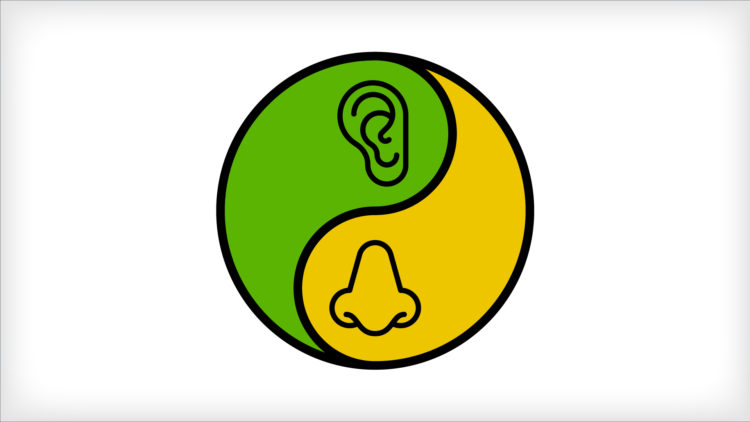

Hearing and Smell
Aromatherapy: In Traditional Chinese Medicine Geranium oil is considered to have an affinity for the Kidneys, which control the ear. Apply one to two drops on your fingertips and gently massage the outside of your ear and ear lobes. Take in the sweet smell and sounds. Allow the floral scent to elevate your mood and heighten your hearing. Geranium has been shown to help sensorineural hearing loss (Victory, 2019.)
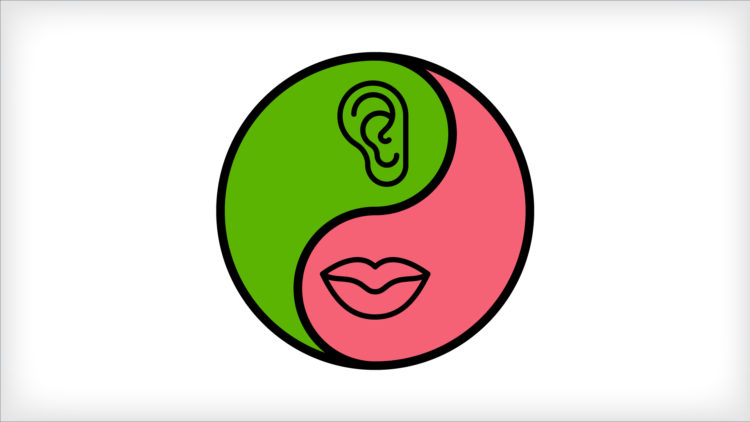

Hearing and Taste
Mindful Eating: Does the sound of the food as you chew (crunch, swish, etc.), reveal something unique about the taste experience while eating a particular food? Did you notice if the sound adds to the fun of eating your vegetables? The crunch-squish of a fresh cucumber sure sounds like a food orchestra to me!
From the Experts
Gabriela Asch-Ortiz, MS, LCAT, MT-BC
In understanding the importance of hearing, as a multi-sensory, bodily experience, we can begin to look at all the ways in which we are influenced by our sonic environments. The sounds of our environment as a whole of interactive parts can be referred to as a soundscape, a lens that allows for greater perception, understanding and interaction with our surroundings (Traux,1999; Schafer, 1977). These soundscapes are often byproducts of historical, political and cultural factors, which can be intentionally or unintentionally created. For example, the hospital and urban environments as a whole can often present as a network of busy auditory soundscapes. As we exist in and experience these environments, it is important to acknowledge the ways in which sound influences our feelings, thoughts and behaviors individually and collectively.
Negative soundscapes, which are often produced by artificial devices including trains, cars, airplanes, machinery and bells can lead to subjective and physiological negative health outcomes (Topf, 2000; Ruud, 2010; Ryherd, Way & Ljungkvist, 2008). Noise can disturb our sleeping patterns and provoke people into aggression, depression and eventually despair (Ruud, 2010). A study of 100 critical care nurses revealed significant correlation between self-reported scores for noise-induced subjective stress and frequency of headaches while working (Topf, 1989). Additionally, the fatigue posed by the “cacophony” of medical alarms can lead to increased likelihood of error in judgement for medical staff (Mazer, 2012).
When we speak about the practice of listening as a multisensory experience, it encourages us to think about sound not only as an act of listening with the ears, but as a felt, embodied sonic experience. Such listening serves to help us develop greater awareness of our soundscapes and develop greater control over our own sonic interactions. Ideally, as we feel increasingly attuned to our external sonic environments, we may feel more able to create positive shifts in our internal states. The listening exercise provided above offers opportunities for engaging in such sonic attunement throughout day-to-day experience.
Resource Links
Books:
- Auster, S. (2019). Sound bath: Meditate, heal and connect through Listening. New York, NY: Tiller Press.
- Oliveros, P. (2005). Deep listening: A composer’s sound practice. Lincoln, NE: iUniverse
- Pransky, J. (2017). Deep listening: A healing practice to calm your body, clear your mind and open your heart. Emmaus, PA: Rodale.
Apps:
- Calm offers various soundscapes, guided meditation programs, breathing sessions, adult bed-time stories and masterclasses by international coaches.
- NatureSpace, offers 3D visual and sound recordings of natural places like forests, deserts, mountains.
References
Auster, S. (2019). Sound Bath: Meditate, Heal and Connect Through Listening. New York, NY: Tiller Press.
Mazer, S.E. (2012). Creating a culture of safety: Reducing hospital noise. Biomedical Instrumentation & Technology, 46(5), 350-355.
Oliveros, P. (2005). Deep listening: A composer’s sound practice. Lincoln, NE: iUniverse.
Pavlicevic, M., & Impey, A. (2013). Deep listening: towards an imaginative reframing of health and well-being practices in international development. Arts & health, 5(3), 238-252.
Pransky, J. (2017). Deep listening: A healing practice to calm your body, clear your mind and open your heart. Emmaus, PA: Rodale.
Ryherd, E.E., Waye, K.P., & Ljungkvist, L. (2008). Characterizing noise and perceived work environment in the neurological intensive care unit. Journal of the Acoustical Society of America. 123(2), 747-756.
Ruud, E. (2010). Music therapy: A perspective from the humanities. New Braunfels, TX: Barcelona.
Schafer, R.M. (1997). The soundscape: our sonic environment and the tuning of the world. Rochester, VT: Destiny Books.
Topf, M. (1989). Personality hardiness, occupational stress, and burnout in critical care nurses. Research in Nursing and Health, 12(3), 179-186.
Topf, M. (2000). Hospital noise pollution: An environmental stress model to guide research and clinical interventions. Journal of Advanced Nursing, 31(3), 520-528.
Traux, B. (1999). Handbook for acoustic ecology (2nd Ed.). Vancouver, Canada: Cambridge Street Publishing.
Woods, A. T., Poliakoff, E., Lloyd, D. M., Kuenzel, J., Hodson, R., Gonda, H., & Thomas, A. (2011). Effect of background noise on food perception. Food Quality and Preference, 22(1), 42-47.